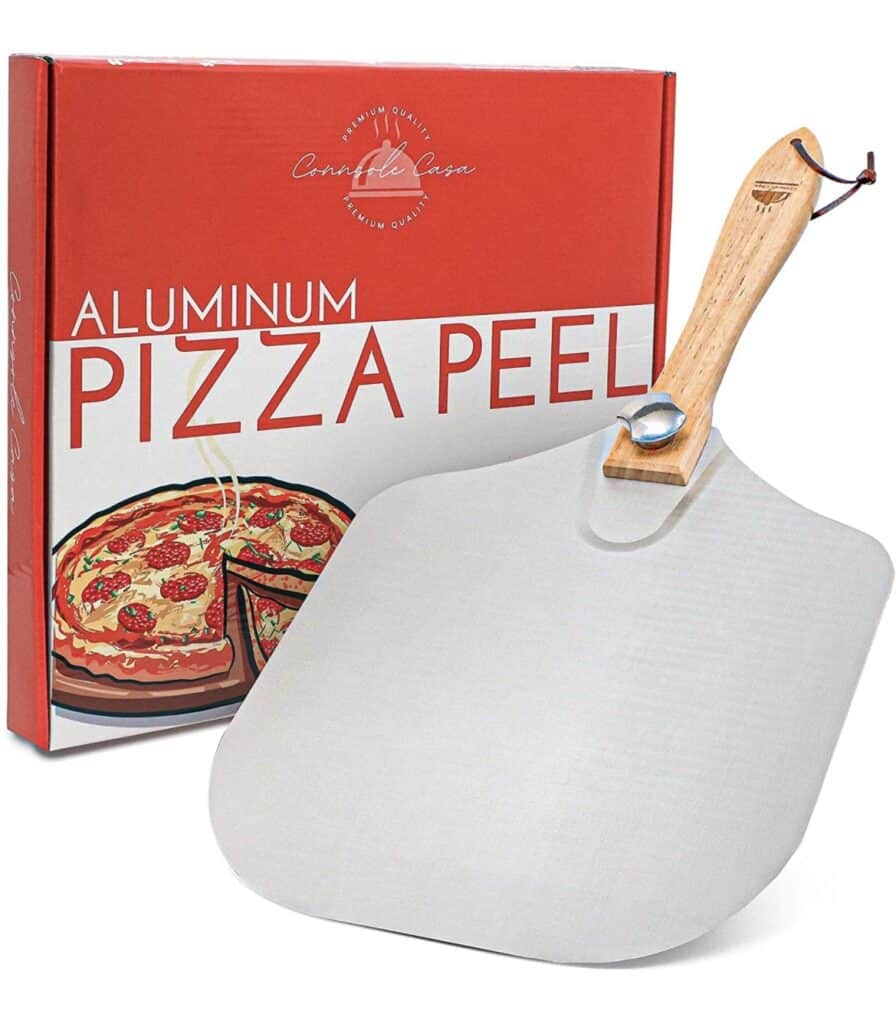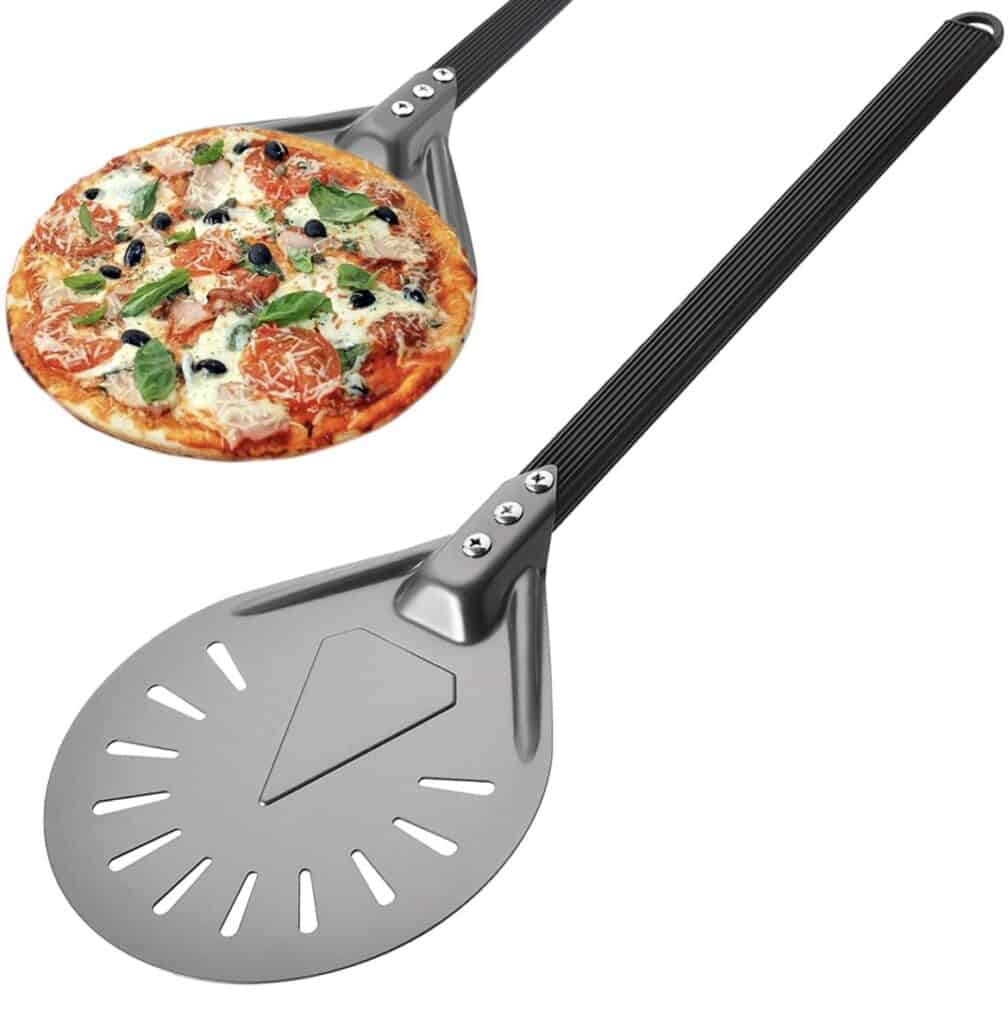Until I began making pizzas regularly at home on a stone, I never really understood what the big deal was about pizza peels. After all, the actual act of transferring pizza to stone is a matter of seconds, and I was always taught the trick was to make those seconds brief.
The big difference between aluminum and steel pizza peels largely has to do with weight. Steel is heavier than aluminum. Personally, I prefer the lighter material, as aluminum also makes for a smoother transition once you master the handiwork necessary.

But fortunately, if you don’t want to work with either, there are plenty of options at your disposal. In this post, I’ll go through the various types of pizza peels in the hopes it’ll help you select one that’s right for you.
Aluminum vs. Stainless Steel vs. Other Pizza Peels
There are essentially three different materials that a pizza peel can be made of. They each have their advantages and disadvantages, and of course the type of pizza you’re attempting to make makes a difference as well.
Wooden Peel

Wood hails back from old, classic traditions straight out of Italy. And if you visit a proud Italian pizzeria, you’d likely find the baker hard at work with one of those extra long, wooden peels shoving pizzas deep into a wood-fired tunnel.
It does, however, not last as long as the other materials available and can be very hard to keep clean.
That said, wood is also probably the easiest to grip. Once you get a handle on it, there’s little chance of dropping it.
Stainless Steel Pizza Peel
Steel obviously lasts much longer than wood, it’s stronger and also smoother, which makes the transition go nicely. They’re not that easy to damage and can resist impacts that can easily occur when you’re using them.
They are, however, the heaviest option out there, which can make some of the maneuvering you need to do a little more difficult than you may be used to.
There’s one other benefit that comes to working with steel: it’s probably the healthiest option. What I mean is that steel prevents any bacteria from spreading, which is excellent for anyone concerned about germs.
Aluminum Pizza Peel

My personal favourite out of the options, aluminum is light-weight and reduces friction between the dough and the peel, which means they can slide off onto the stone smoothly. They’re slightly less durable than steel, but as long as you’re careful, they can last you a long time.
Types of Pizza Peels
One aspect of pizza peels that I like is that, depending on what kind of pizza you’re trying to make, there’s a specific peel that’ll suit it. From shape to size and material, different pizzas just require different tools.
Whether Round or Rectangular

A rectangular peel is probably the safest and easiest to work with. It gives you a lot of space to work with, so there’s no chance the dough will accidentally slide off one of the sides.
A round or circular peel, on the other hand, has bevelled corners that help prevent that same issue. There’s less space usually, but once you master the art of transfer, it shouldn’t be an issue. Part of the joy of using a peel is getting that trick of the wrist just right.
The round peels are also easier to put deeper into the oven.
I’ve gotten so good that I’m quite adept with a round peel, but amateurs might want to start out with a rectangular peel for practice purposes.
Size Matters
Size is an easy question to determine the answer to. It’s all about relativity. The size of the peel you’re using is relative to the size of your pizza. If you’re planning on making something that can rival the local pizzeria’s eating contest, where you’ll get it free if you eat the whole thing, you’re going to need a fairly large peel to move that beast.
But typically, a pizza is 33-36cm in diameter. Bigger pizzas are likely going to require using a rectangular peel, as they would not fit in the beveled edges of a round one.
And lastly, handle size is also important and equally relative, but to the depth of your oven this time. If you have a fairly deep oven, you need a longer handle to reach in. At minimum, for any oven, you want at least a 12” handle. Larger ovens, such as large, artisanal ovens, can require twice that length.